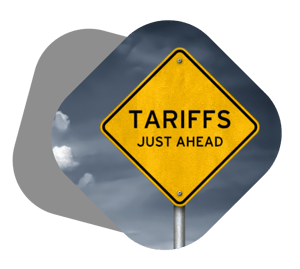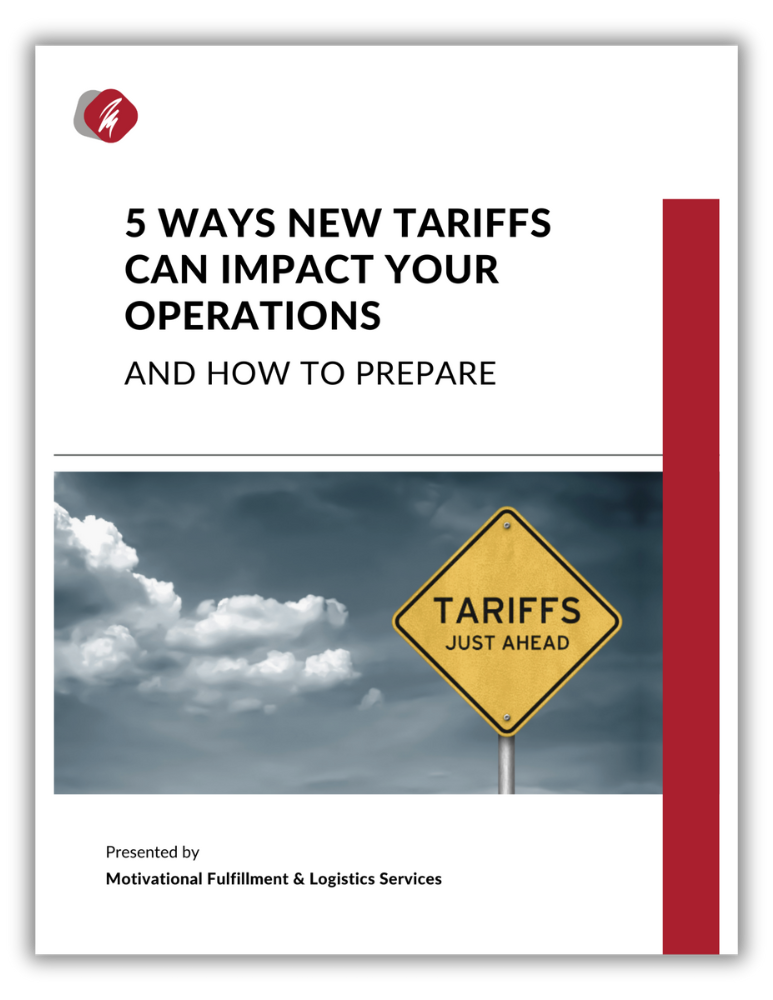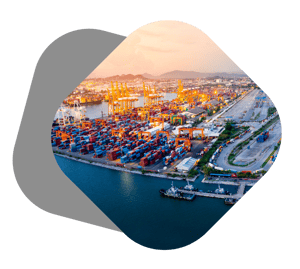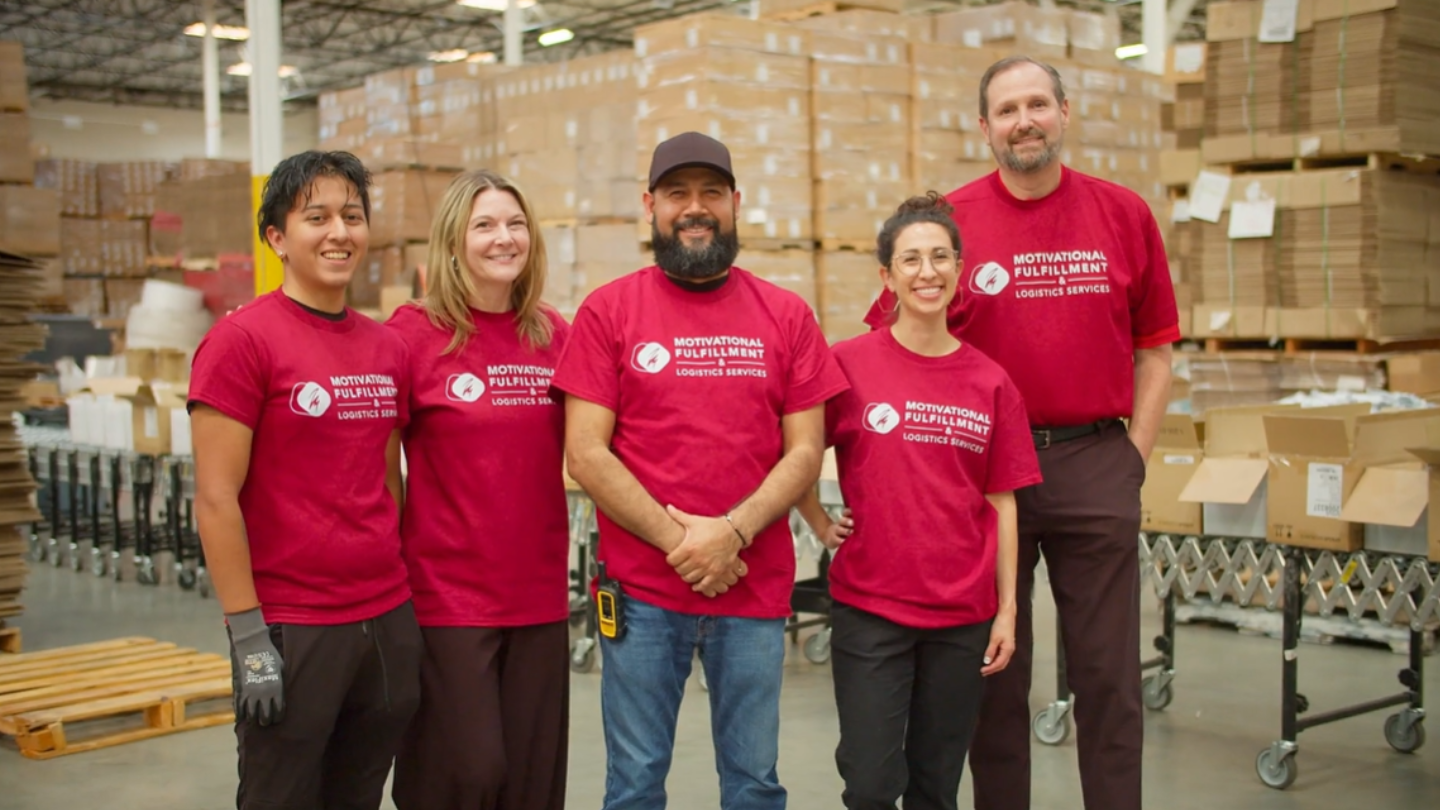
5 Ways Tariffs Can Impact Your Operations, and How to Prepare
Tariff headlines continue to dominate the news cycle, creating uncertainty for global trade and supply chains.
For consumer brands and manufacturers, these shifts bring new challenges and opportunities in managing logistics.
To stay ahead, it’s critical to understand how these tariffs could impact your supply chain and what steps you can take to mitigate their effects.
Here are the top five ways tariffs could impact your logistics in 2025, and how to prepare your business for what’s ahead.

Industries We Serve
We serve a broad spectrum of consumer product companies, including these and others:


Download this Guide as a PDF to read later
5 Ways New Tariffs Can Impact Your OperationsIncreased Shipping Costs
One of the most immediate impacts of tariffs is the increase in costs for imported goods. These additional expenses ripple through the supply chain, often resulting in higher transportation and logistics costs. For example, freight rates may rise due to shifts in demand and changing trade routes.
What this means for your logistics
Higher costs can squeeze profit margins, forcing tough decisions on whether to absorb the expenses or pass them on to customers.
Businesses may see narrower profit margins or be forced to pass costs on to customers.
How to prepare
We recommend that manufacturers optimize shipping strategies by consolidating shipments and exploring dynamic parcel solutions. It is also worthwhile to work with a logistics partner that benefits from volume discounts with carriers and can pass those savings along to you.
Supply Chain Disruptions
New tariffs are going to cause shifts in sourcing and manufacturing locations. Many companies are already working to move some of their operations to countries with friendlier tariff agreements, a strategy known as “friend-shoring.” With an urgency to make these types of moves happening among many businesses, bottlenecks and extended lead times are sure to occur alongside this movement.
What this means for your logistics
Adjusting to new suppliers may cause temporary disruptions, risking stockouts. overstock situations, or the need for rework of defective manufacturing, if not carefully managed.
How to prepare
We recommend partnering with a 3PL skilled in inventory management to maintain continuity and avoid unnecessary delays as your supply chain adapts.
Compliance Complexities
Adhering to new tariff regulations requires meticulous documentation and adherence to customs requirements. Even minor mistakes in tariff classifications or shipment paperwork can result in delays, fines, or seized goods.
What this means for your logistics
Navigating these complexities adds time and risk to your shipping process, especially if your systems aren’t equipped to handle the increase in volume.
How to prepare
Make sure to partner with a 3PL that has the experience and technology to simplify compliance. You’ll need flexible tech that works seamlessly with your systems, has secure EDI integrations, along with a 3PL team that knows how to streamline documentation, ensure data accuracy, and thus reduce the risk of errors. Staying on top of compliance requirements will keep your supply chain moving smoothly.
Fluctuations in Demand
Tariffs don’t just affect costs – they also influence consumer behavior. Any costs that trickle down to consumers are likely to shift buying patterns, leading to unpredictable or uneven demand.
What this means for your logistics
Supply chain planning will become more complicated. There will be a higher risk of overstocking or understocking depending on how demand fluctuates.
How to prepare
Use demand forecasting tools and partner with a 3PL that has flexible warehousing solutions to adapt quickly to changing market conditions. A logistics partner with robust analytic capabilities can help you anticipate trends and adjust inventory levels accordingly.
Competitive Pressure
The proposed tariffs will create a divide between companies that adapt strategically and those that don’t. Brands that implement smart logistics strategies will have a clear advantage, while others may struggle to keep up.
What this means for your logistics
Failing to adjust could mean losing market share to competitors who are better prepared.
How to prepare
Work with a proactive logistics partner who understands your unique challenges and offers tailored solutions. The right partner will not only help you overcome tariff-related obstacles but also position your brand as a leader in a changing market.
Turn Logistics Challenges into Opportunities
While new tariff policies present clear challenges, they also offer an opportunity for all of us to innovate and strengthen our logistics processes together.
At Motivational, we are dedicated to helping brands sustain growth even amid disruptions like these. We work to be more than just a service provider. We serve as a true partner, standing behind you as reliable allies in your journey.

